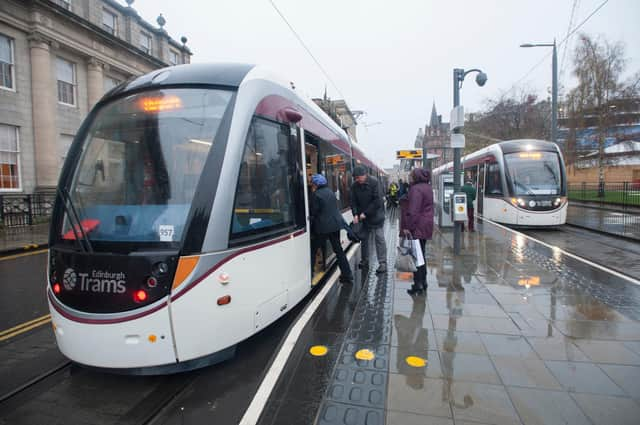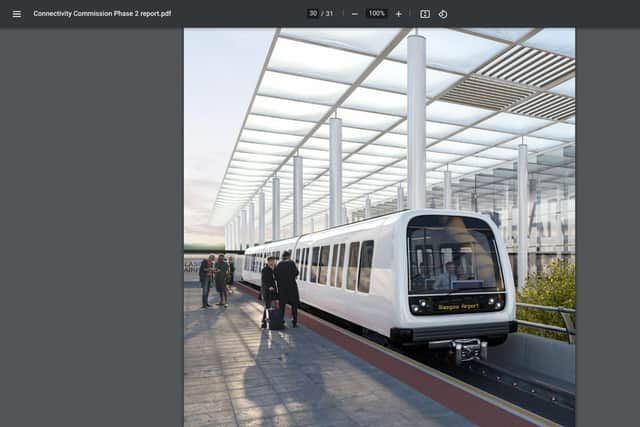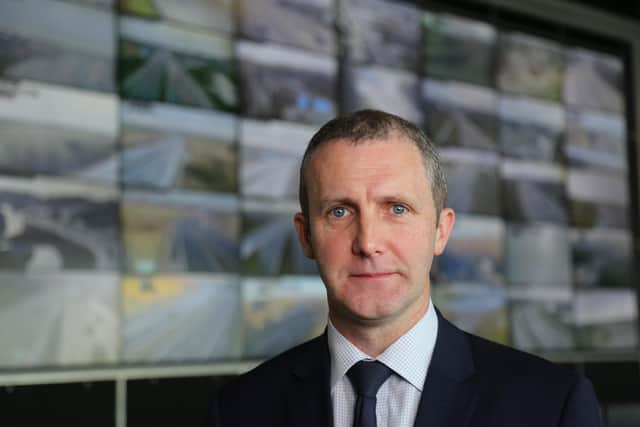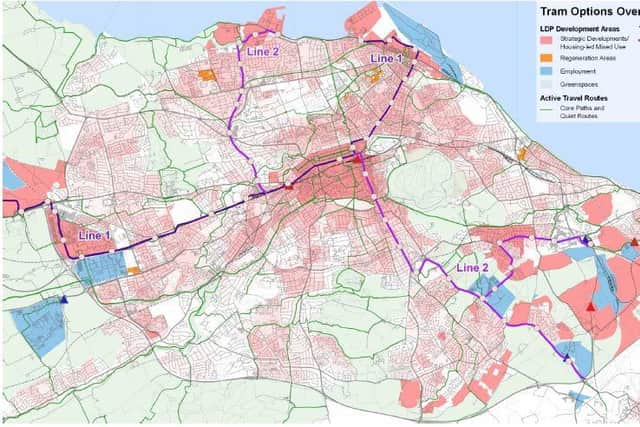Edinburgh's two shelved tram lines could be revived


A “mass transit” route that could be run by trams or buses on dedicated lanes features among Transport Scotland’s 20 major project priorities.
It would link Granton with the city centre and the south east of the capital, following the path of formerly-planned routes.
Advertisement
Hide AdAdvertisement
Hide AdA line between the northern suburb and Princes Street via Roseburn was abandoned when Edinburgh’s tram scheme went massively over budget.


Another, south from Princes Street past Edinburgh University to the south east was also ditched.
Transport Scotland said the line could be followed by re-opening of the south suburban rail line, which is used by freight trains.
The agency’s latest strategic transport projects review said the network may even be extended across the Forth into Fife.
The review is the first part of a multi-stage process to decide Scotland’s transport spending priorities for the next 20 years.


The recommended projects will be further appraised before decisions are made by ministers this autumn.
They also include expanding 20mph zones, new segregated “active freeways” for walking, cycling and wheeling, more space to buses, improving toilets and rest areas for truckers and already-published plans expand Waverley Station.
The review stated: “Edinburgh mass transit is an enhanced level of public transport provision in the city region, including bus rapid transit and tram.
Advertisement
Hide AdAdvertisement
Hide Ad"It would complement and integrate with the current bus, tram and rail networks.


"The initial focus is on delivering mass transit from the north of the city (Granton), through the city centre to the south/east extremities of the city boundary.
"Further extension could result in increasing frequency of mass transit services to Edinburgh from neighbouring local authorities, or introducing a south suburban railway within the city and a cross-Forth light rail transit system to Fife.”
Transport Scotland said trams which can run on rail lines, and trains, are both being explored for the south suburban route.
The report said that while Edinburgh bus network was “excellent”, “high levels of passenger demand means journey times are slow and infrastructure is reaching maximum capacity”.
It also referred to “frustration at the speed of bus journeys, both absolute and relative to the car.
"Morning and evening peak journey times to and from Edinburgh city centre can be extremely slow, taking nearly 50 minutes from Portobello and up to an hour and a half from Dalkeith.”
The study said there was also a lack of orbital routes, which limited connections to Edinburgh Airport, the Gyle, the Royal Infirmary and the BioQuarter.
Advertisement
Hide AdAdvertisement
Hide AdIt stated: "A transport system that encourages a mode shift away from the private car is a critical priority of the network to cater for increasing demand for travel in a sustainable manner.”
An off-road dedicated busway operated in Stenhouse and Broomhouse in the west of Edinburgh for five years until being converted into part of the city centre to airport tram line.
Edinburgh City Council’s SNP transport convener Lesley Macinnes said: “The progress of mass rapid transit is key to our forthcoming City Mobility Plan, supporting people to make convenient, sustainable transport choices as well as connecting to areas of future growth.
"Support in this report for reallocation of road space for walking and cycling, expanding on work through our Spaces for People project, City Centre Transformation and our ongoing, ambitious active travel programme, will help us create a truly people-friendly city.”
Karen Doran, the council’s Labour vice convener, said: “We’re already focusing on a great many schemes to support sustainable transport, from measures to prioritise public transport and investing in trams to Newhaven to major cycling and walking improvements around the Capital.
“The themes and recommendations within this report very much reflect and bolster our own aspirations to encourage modal shift away from private car journeys, responding to the climate emergency, minimising air pollution and supporting healthy lifestyles.
"We look forward to working with Transport Scotland to progress the recommendations, to the benefit of the city.”
Transport Secretary Michael Matheson said: “We are conducting a thorough, evidence-based review of the performance of Scotland’s strategic transport network across active travel [walking, cycling and wheeling], bus, ferry, rail and the trunk road network.
Advertisement
Hide AdAdvertisement
Hide Ad“[The report] Phase one sets out some of our transport investment priorities for the next few years, which will support a fair and sustainable economic recovery from the pandemic, while working towards our longer-term goals of making Scotland more accessible for residents, visitors and businesses, improving connectivity and highlighting the vital contribution that transport investment can play in enabling and sustaining Scotland’s economic growth.”
A message from the Editor:
Thank you for reading this article. We're more reliant on your support than ever as the shift in consumer habits brought about by coronavirus impacts our advertisers.
If you haven't already, please consider supporting our trusted, fact-checked journalism by taking out a digital subscription.
Comments
Want to join the conversation? Please or to comment on this article.